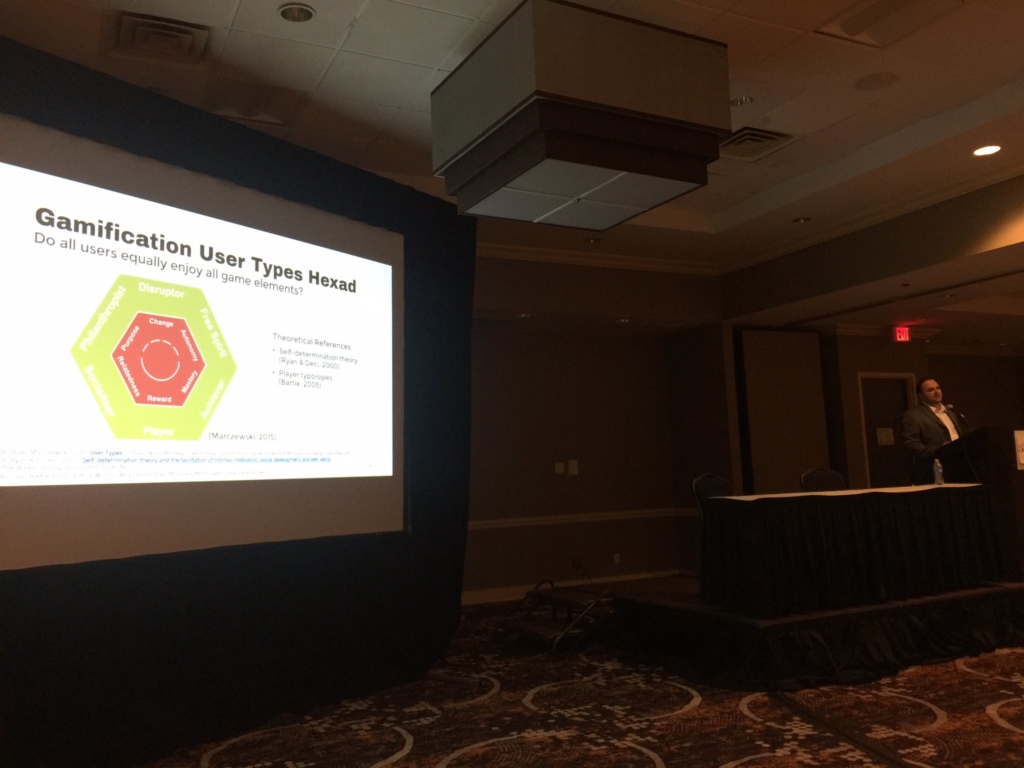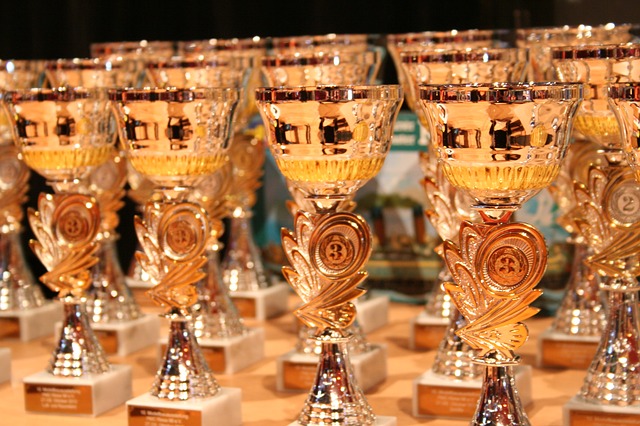CHI PLAY 2016, the ACM Annual Symposium on Computer-Human Interaction in Play, happened last week and made available a lot of interesting research in games, play, and gamification. I have made a compilation of 12 of the relevant findings for future Gamification design and research. Check them out!

Design
Applications can be designed to support different user types of be personalized to specific target users. In The Gamification User Types Hexad Scale, researchers showed which game design elements users of each one of the Hexad types prefer, thus revealing the possibility to design general or personalized gameful applications.
A key success factor in desiging games for health if the balance between focusing on the problem and the solution. In “Always a Tall Order”: Values and Practices of Professional Game Designers of Serious Games for Health, researchers discussed the challenges faced by games for health designers and the importance of balancing the view of health professionals and game designers.
Rewards
Letting users choose their rewards can improve task completion and engagement. In Reward Systems in Human Computation Games, researchers studied the effects of randomly chosen rewards or player chosen rewards in a Human Computation game, and concluded that letting players choose their rewards improved task completion and engagement. Although their test was specific to human computation games, we might expect similar effects on other gameful applications.
Applications can enable users to interact with collected rewards through curation, preservation of context, and sharing. In “The Collecting Itself Feels Good”: Towards Collection Interfaces for Digital Game Objects, researchers showed that is not enough to reward users with collectible objects. Users wish to be able to further interact with these collections using curation interfaces, ways to recall the context in which the objects were collected or used, and means to share their collections with other users.
Motivation
External rewards can increase effort and performance for less intrinsically motivated users, but they can have the contrary effect for already intrinsically motivated users. In The Motivational Push of Games: The Interplay of Intrinsic Motivation and External Rewards in Games for Training, researchers discuss the need to design different rewards mechanics for users who are already intrinsically motivated to engage with the system and those who are not.
Positive reinforcement might be better for training applications than negative reinforcement. In Using Positive or Negative Reinforcement in Neurofeedback Games for Training Self-Regulation, researchers evaluated both positive and negative reinforcement in a neurofeedback training game and concluded that positive reinforcement lead to more effort and investment from players. Although their test involved only neurofeedback games, we might expect similar effects on other types of training games or applications.
Evaluation
Game analytics can help evaluate educational games. In Opening the Black Box of Play: Strategy Analysis of an Educational Game, researchers showed that collecting and analyzing game data such as time spent or number or tries in each of the game’s levels can provide relevant insights. For example, a high number of retries of a single level can show that users have difficulty learning that particular topic.
Applications
Games for networking can encourage interaction without causing stress. In Say Cheese!: Games for Successful Academic and Student Networking, researchers discuss the idea of a networking game which main interaction is taking photos of other players. This way, they aimed to encourage networking without implement forced icebreaking situations, which sometimes just help create more stress.
Games can be more effective than social icebreakers for building trust. In Trust Me: Social Games are Better than Social Icebreakers at Building Trust, researchers showed that engaging in social games can more effectively help distributed teams to build trust between members than simple social icebreakers, due to the engagement in both risk and interdependence situations.
Mixed-reality games can be used to arouse empathy. In A Breathtaking Journey: On the Design of an Empathy Arousing Mixed Reality Game, researchers explored the design of an embodied and multisensorial mixed-reality game providing a first-person experience of a refugee’s journey, aimed at arousing empathy toward this people group.
Payful design can help engage patients with physical therapy. In Playification: The PhyseEar case, researchers explored the design of a playful intervention that help motivate and engage elderly inpatients with physiotherapy rehabilitative sessions.
Play can support sick children with their hospital experience. In Designing Play to Support Hospitalized Children, researchers argue for using play to engage the children with the hospital experience instead of distracting them from the experience.
Additional Information
The papers highlighted above are just a small selection of everything that was presented at CHI PLAY 2016. Be sure to check the conference’s program to see what else was presented there!
I have also published a day-to-day recollection of what happened at CHI PLAY for the ACM XRDS blog. Check them out in case you’re interested in more details!



